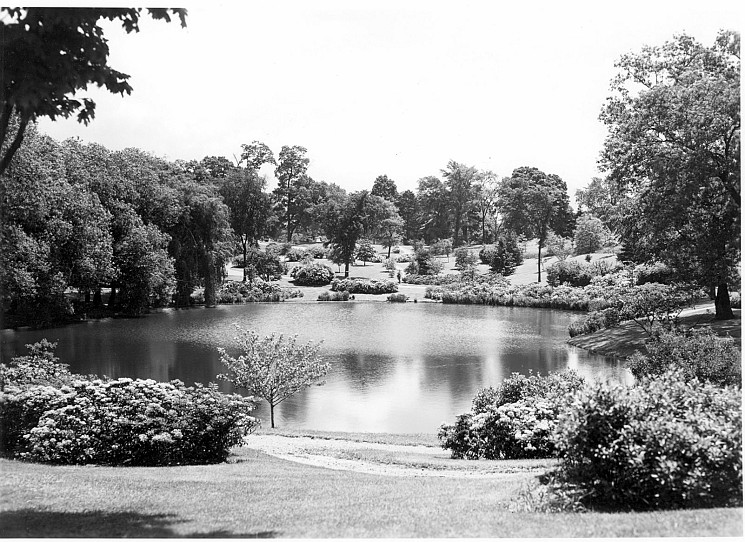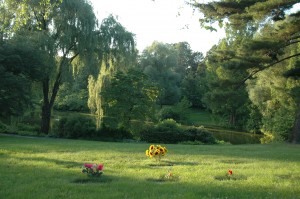Memorial park concept at Willow Pond designed to meet 20th-century needs

In the 20th century Mount Auburn moved into a landscape style influenced by Forest Lawn Cemetery in Glendale (outside of Los Angeles, CA). Laurence Caldwell, a landscape architect active at Mount Auburn in the 1920s and 1930s wrote that older cemeteries were “Uninteresting and repelling because of the hodge podge of objects and the monotonous view of tombstones. He believed “the new cemetery should become a park-like area with inspiring natural scenery carefully preserved and developed to attain a high degree of quiet dignity and peace.” These ideas were applied to the Southwest Corner of the Cemetery with Willow pond as a natural landscape focal point.
The most important aspect of the memorial park concept was that individual and family monuments are taken out of the visual landscape. The markers are flush with the ground except for institutionally located monuments like the Duca Sculpture. The Willow Pond area developed in the 1920s resembles a public park. The landscape is punctuated by beautiful trees and a scattering of shrubs.
The modern concept of a memorial park reflects 20th-century changes in attitudes about death and in our society itself. David Sloane, professor in the Price School of Public Policy at the University of Southern California and author of The Last Great Necessity: Cemeteries in American History (1995) shares the following thoughts on the Changing Tastes Audio Tour [Mount Auburn, 1993]:
“This landscape reflects a 20th century approach to death, just as the other landscapes reflected a 19th century approach to death. This is a much more personal, private place to mourn your dead than the previous sections in Mount Auburn. You know where your monument is; your family knows where the marker is. But the world does not see it; it is not part of that expression of death and mourning. Gone is the 19th century sentiment of death. Here in the 20th century it is simpler, more modern and more distant.”


Leave a Reply to Frances Doyle Cancel reply